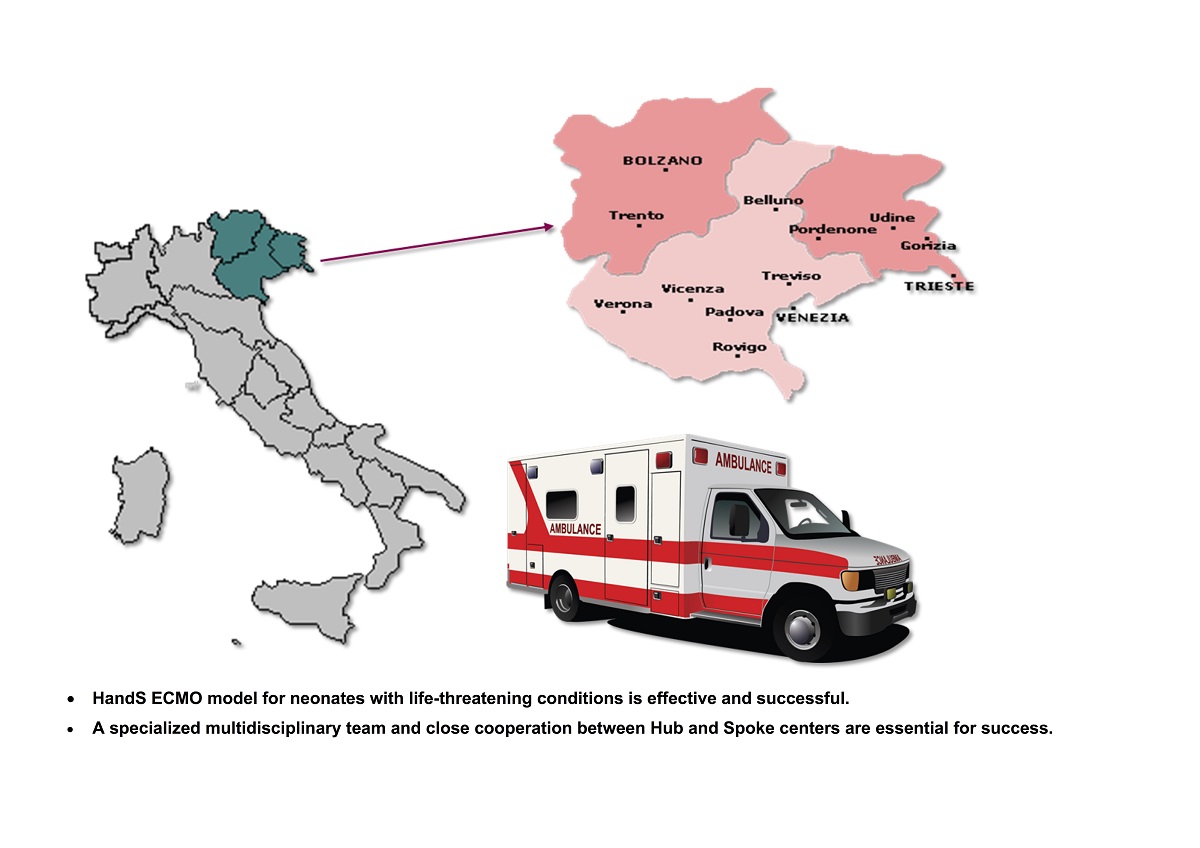The neonatal Hub and Spoke (HandS) ECMO approach provides emergent ECMO implantation to support neonates in severe cardio-respiratory life-threatening conditions at secondary (Spoke) centers, and a safe transfer to the ECMO center (Hub). We report a retrospective review of 11 neonates fom January 2014 to January 2020, presenting with life-threatening conditions and treated by HandS ECMO team in Spoke hospitals. Protocols and checklists were arranged by a local group of ECMO experts and shared with all the hospitals located in North-Eastern Italy. At the emergent call, all patients were cared for at the Spoke hospitals, receiving maximal respiratory and cardiovascular support (including high frequency oscillatory ventilation, inhaled nitric oxide, and major inotropic intravenous infusion). All but 3 patients were affected by life-threatening meconium aspiration syndrome. Median duration of ECMO support and hospitalization were 4 days (range 2-32) and 30 days ( range 8-50), respectively. All but 2 patients with congenital diaphragmatic hernia, were weaned off ECMO and discharged home without complications. At a median follow up of 14.4 months (1.3-74.8), all survivors were alive and in good clinical conditions, without medications, and normal somatic growth. All but one had normal neuropsychological development. We conclude that HandS ECMO model for treating neonates in life-threatening conditions is effective and successful. A specialized multidisciplinary team and common organizational protocols shared between Hub and Spoke centers are the key-points for success. While excellent results occur with MAS (100% survival), treatment was not successful in CDH, in which other that HandS ECMO issues are implied. Lessons learned from our experience are presented and discussed in this article.

